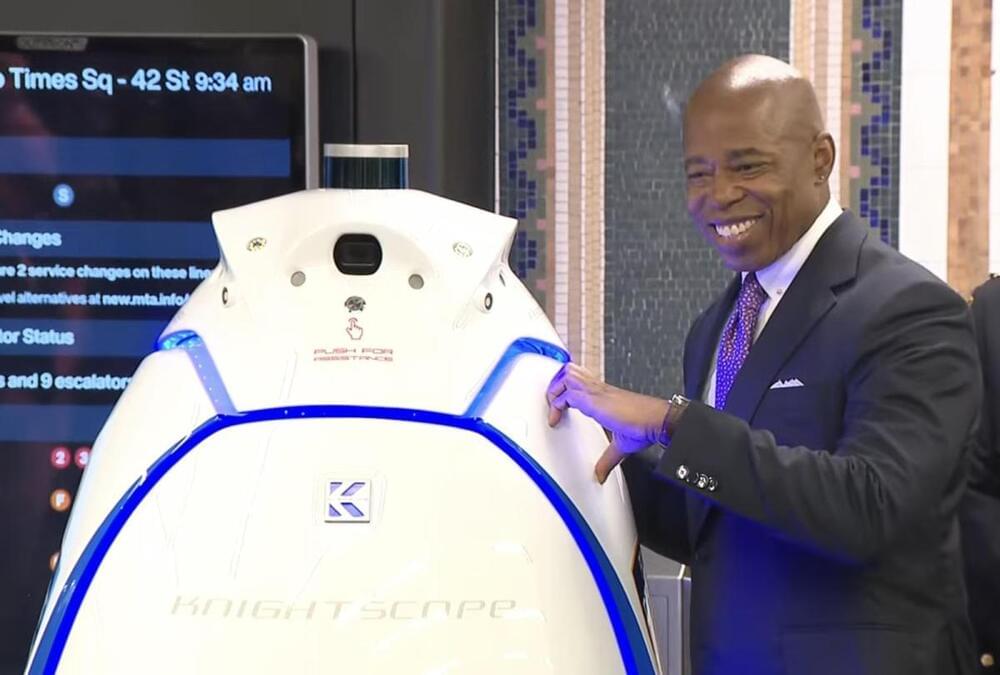The amount of funds crypto projects lost to hackers has declined by about half to around $1.7 billion so far this year, amid improved security measures and an uptick in law enforcement actions.



NASHVILLE, Tenn. (AP) — A ransomware attack has prompted a healthcare chain that operates 30 hospitals in six states to divert patients from at least some of its emergency rooms to other hospitals, while putting certain elective procedures on pause, the company announced.
In a statement Monday, Ardent Health Services said the attack occurred Nov. 23 and the company took its network offline, suspending user access to its information technology applications, including the software used to document patient care.
The Nashville, Tennessee-based company said it cannot yet confirm the extent of any patient health or financial information that has been compromised. Ardent says it reported the issue to law enforcement and retained third-party forensic and threat intelligence advisors, while working with cybersecurity specialists to restore IT functions as quickly as possible. There’s no timeline yet on when the problems will be resolved.

The New York Police Department (NYPD) is implementing a new security measure at the Times Square subway station. It’s deploying a security robot to patrol the premises, which authorities say is meant to “keep you safe.” We’re not talking about a RoboCop-like machine or any human-like biped robot — the K5, which was made by California-based company Knightscope, looks like a massive version of R2-D2. Albert Fox Cahn, the executive director of privacy rights group Surveillance Technology Oversight Project, has a less flattering description for it, though, and told The New York Times that it’s like a “trash can on wheels.”
K5 weighs 420 pounds and is equipped with four cameras that can record video but not audio. As you can guess from the image above, the machine also doesn’t come with arms — it didn’t quite ignore Mayor Eric Adams’ attempt at making a heart. The robot will patrol the station from midnight until 6 AM throughout its trial run that’s running over the next two months. But K5 won’t be doing full patrols for a while, since it’s spending its first two weeks mapping out the station and roaming only the main areas and not the platforms.
It’s not quite clear if NYPD’s machine will be livestreaming its camera footage, and if law enforcement will be keeping an eye on what it captures. Adams said during the event introducing the robot that it will “record video that can be reviewed in case of an emergency or a crime.” It apparently won’t be using facial recognition, though Cahn is concerned that the technology could eventually be incorporated into the machine. Obviously, K5 doesn’t have the capability to respond to actual emergencies in the station and can’t physically or verbally apprehend suspects. The only real-time help it can provide people is to connect them to a live person to report an incident or to ask questions, provided they’re able to press a button on the robot.

The US military and its contractors would be exempt.
Robots that are autonomous or semi-autonomous and carry weapons or offensive capabilities are often called armed robots. These robots can be employed in a variety of settings, including the military, law enforcement, industry, and security.
Today, many armed robots are controlled remotely by human operators who can keep a safe distance between themselves and the devices. This is particularly prevalent with military drones, as the operators control the aircraft and its weaponry from a distance, making the machines even more dangerous to civilians.
There are continuous efforts to establish rules and laws controlling the deployment of armed robots in order to reduce the risks involved. Now, one US state is trying to outlaw them altogether.
This is according to a press statement by the American Civil Liberties Union (ACLU) published on Wednesday.
A group of Massachusetts legislators, human rights organizations, and executives from the robotics sector are joining forces to support legislation that would make arming robots, as well as drones and other uncrewed devices, illegal.

The idea that genetic modification can improve humanity isn’t new, but it has taken some interesting turns within the scientific community over the past few years. One of the most notable comes from the mind of He Jiankui, a Chinese scientist whose gene editing of human babies led to infamy and a prison sentence. Now, He, known as JK to friends, thinks that gene-edited humans could be the future of our species.
Sign up for the most interesting tech & entertainment news out there.
The United States government said today that a multinational law enforcement operation has destroyed Qakbot, also known as QBot, an infamous botnet and malware loader that was responsible for losses that amounted to hundreds of millions of dollars all over the globe, and that they have confiscated more than $8.6 million in illegal cryptocurrencies.
During a news conference held on Tuesday to announce the takedown of the botnet, United States Attorney Martin Estrada referred to the investigation as “the most significant technological and financial operation ever led by the Department of Justice against a botnet.” Duck Hunt was headed by the FBI. For one thing, the federal government developed some software that, when installed on computers that were infected with Qbot, would make the virus useless.
Law enforcement agencies in the United States and other countries have worked together over the last three days to confiscate 52 servers that were being used to sustain the QBot network. With assistance from France, Germany, the Netherlands, the United Kingdom, Romania, and Latvia, these agencies were successful in “preventing Qakbot from resurrecting to cause further additional harm,” as stated in the report.

• Encryption and segmentation: These operate on the assumption some fraction of the network is already compromised. Restricting the reach and utility of any captured data and accessible networks will mitigate the damage even on breached systems.
• SBOM documentation: Regulatory compliance can be driven by industry organizations and the government, but it will take time to establish standards. SBOM documentation is an essential foundation for best practices.
If “democracy dies in darkness,” and that includes lies of omission in reporting, then cybersecurity suffers the same fate with backdoors. The corollary is “don’t roll your own crypto” even if well-intentioned. The arguments for weakening encryption to make law enforcement easier falls demonstrably flat, with TETRA just the latest example. Secrets rarely stay that way forever, and sensitive data is more remotely accessible than at any time in history. Privacy and global security affect us all, and the existence of these single points of failure in our cybersecurity efforts are unsustainable and will have unforeseeable consequences. We need to innovate and evolve the internet away from this model to have durable security assurances.

He Jiankui, the Chinese scientist who faced international condemnation in 2018 for creating the first gene-edited children, has presented a new research proposal involving modifying human embryos to address the challenges of the ageing population. He, who was sentenced to three years in prison in 2019 for “illegal medical practices,” resurfaced last year and announced the opening of a research lab in Beijing.

For many people, when they hear China and genetic engineering in the same sentence, it is often synonymous with scandal, and gene-edited babies may spring to mind.
And, although it is true that nearly five years ago, researcher He Jiankui infamously claimed he had created the first ever gene-edited babies, before going to prison for three years, China has continued to pour a lot of money into genetic engineering research, and aims to become a global leader in the field.
“The accumulative amount of financing in the gene therapy field in China has exceeded $3.3 billion. Also, according to a Frost & Sullivan study, it is estimated that by 2025, gene therapy will reach a scale of nearly $17.89 billion in China,” said Fiona Gao, founding partner of Chinsiders.

OpenAI’s large language models (LLMs) are trained on a vast array of datasets, pulling information from the internet’s dustiest and cobweb-covered corners.
But what if such a model were to crawl through the dark web — the internet’s seedy underbelly where you can host a site without your identity being public or even available to law enforcement — instead? A team of South Korean researchers did just that, creating an AI model dubbed DarkBERT to index some of the sketchiest domains on the internet.
It’s a fascinating glimpse into some of the murkiest corners of the World Wide Web, which have become synonymous with illegal and malicious activities from the sharing of leaked data to the sale of hard drugs.